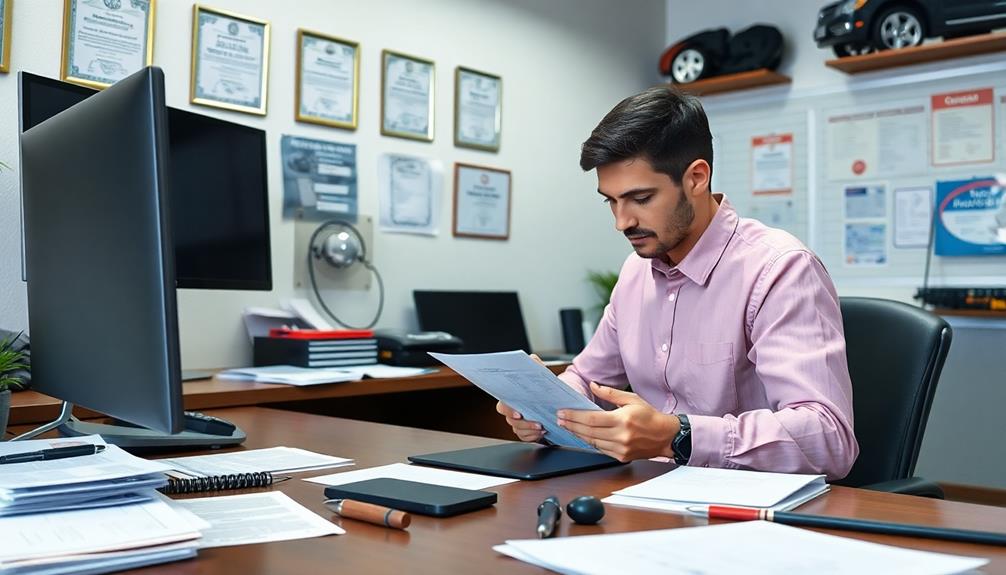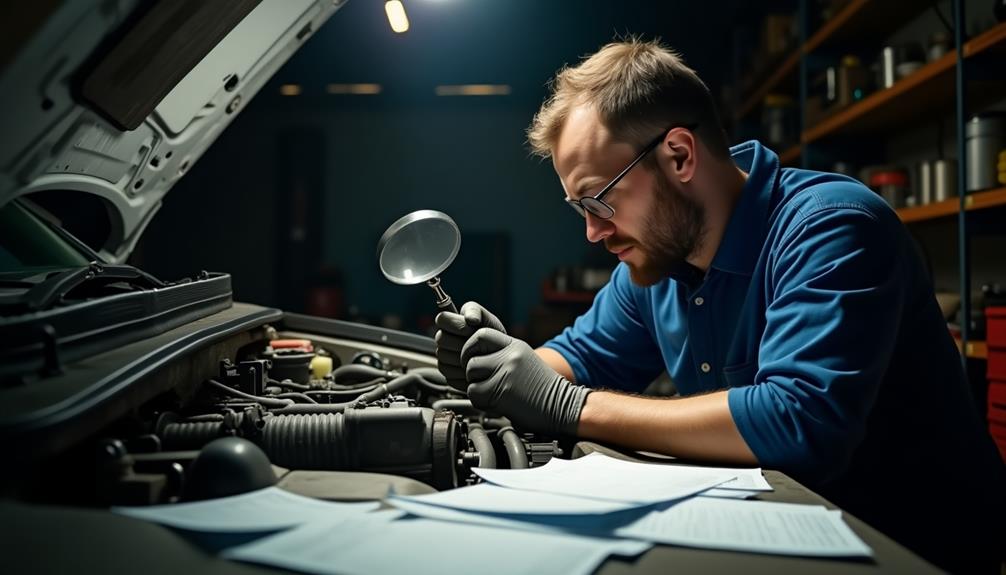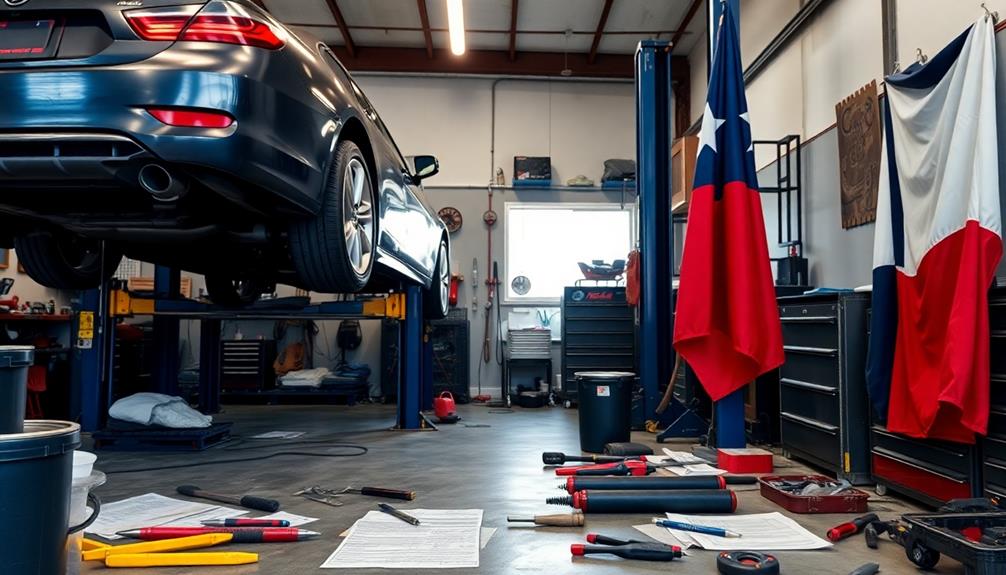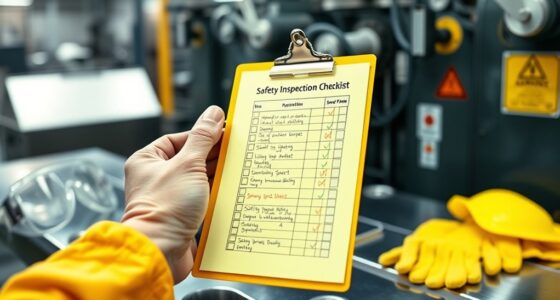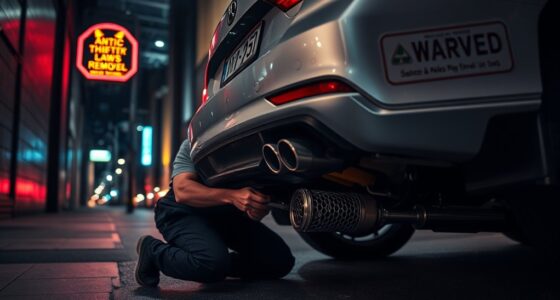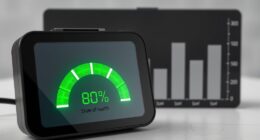To file a complaint with the Bureau of Automotive Repair (BAR), start by visiting their official website and gather your documentation, such as invoices and communication records. You can submit your complaint online for faster processing or send it via mail using a downloadable form. Once submitted, you'll receive a confirmation postcard within ten days. BAR will then investigate your complaint and communicate with both parties involved. Keeping organized records will aid in their review process. If you're interested, there's more valuable information on the next steps and outcomes you can expect.
Key Takeaways
- Visit the Bureau of Automotive Repair (BAR) website to submit a complaint online or download a form for mail submission.
- Gather relevant documentation, including invoices, communication records, and a completed complaint form before submission.
- Submit your complaint using digital copies for online submissions or printed copies for mail submissions to ensure proper processing.
- After submission, expect a confirmation postcard within ten days and stay organized with copies of all materials submitted.
- BAR will investigate your complaint by contacting the mechanic and reviewing documentation, notifying both parties of the outcome.
Overview of the Bureau of Automotive Repair

The California Bureau of Automotive Repair (BAR) plays an essential role in regulating the automotive service industry. This agency oversees mechanics and repair shops to guarantee they comply with automotive regulations. By issuing licenses to qualified professionals, the Bureau of Automotive Repair maintains high standards for automotive service, giving you peace of mind when seeking repairs.
When you encounter issues with a mechanic or a repair shop, the BAR is your go-to resource. They investigate consumer complaints, making sure that your concerns are addressed effectively.
The Bureau also provides educational resources that outline your rights as a consumer in the automotive service sector. This way, you'll know what to expect and how to protect yourself.
If you're unsure about a mechanic's qualifications, you can always verify their license through the BAR. This verification process is vital for confirming that you're entrusting your vehicle to a qualified professional.
Additionally, the Bureau offers an easy online platform for submitting complaints, and you'll receive a confirmation postcard within 10 days of your submission. With the BAR's support, you can navigate the automotive service industry with confidence.
Types of Complaints Against Mechanics
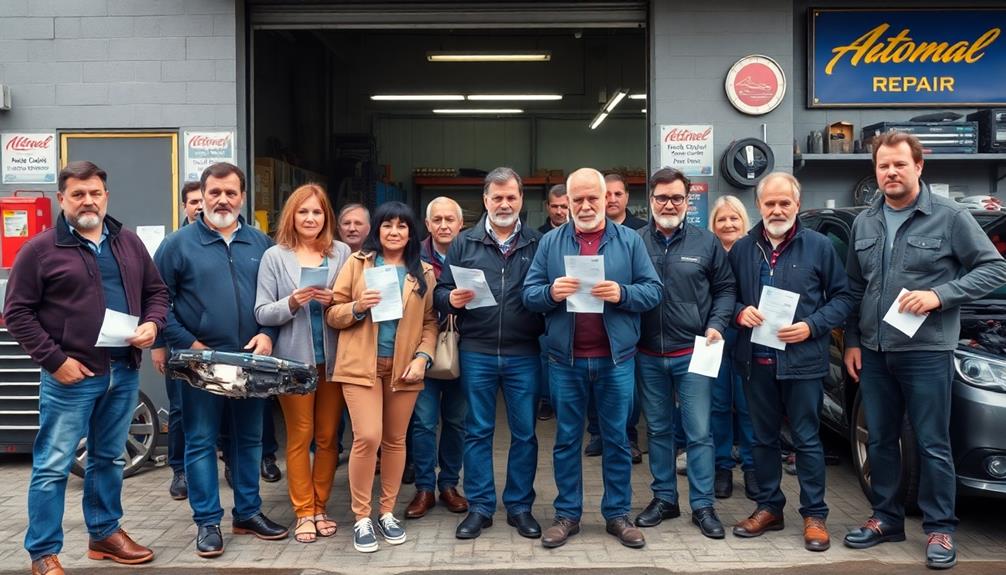
When dealing with mechanics, you might encounter several common complaints.
Many customers report issues like overcharges that exceed initial quotes, poor workmanship that leads to further problems, and even property damage during repairs.
Understanding these types of complaints can help you identify your own concerns and take appropriate action.
Overcharges and Billing Issues
Maneuvering the world of auto repairs can be tricky, especially when you encounter overcharges and billing issues. You might find yourself facing charges that exceed the initial estimate provided by your mechanic, often without prior consent or justification. This not only raises concerns but can lead to disputes over the final bill.
Billing issues can also stem from undisclosed fees, like diagnostic charges or shop supplies, which mechanics should communicate before starting any work. In some unfortunate cases, you might even be billed for repairs that you never authorized or that weren't completed.
To safeguard yourself, mechanics are required to provide written estimates for repairs exceeding $100, aimed at preventing overcharging complaints.
If you believe you've been unfairly charged, you can file a complaint with the California Bureau of Automotive Repair. They investigate potential violations of the Auto Repair Act, ensuring mechanics adhere to the standards expected in the industry.
Poor Workmanship Complaints
Poor workmanship complaints against mechanics can arise from a variety of issues that compromise both the quality of repairs and the safety of your vehicle. These complaints often involve improper installation of parts, leading to further mechanical problems or even safety hazards.
You might notice sloppy repairs that result in visible damage or malfunctioning components, which clearly fail to meet industry standards. Examples of poor workmanship include failing to properly tighten bolts or connectors, causing leaks or mechanical failures shortly after the repair work is done.
Additionally, if your mechanic uses substandard or incorrect parts, it greatly compromises the quality and safety of the repairs.
When filing a complaint with the Bureau of Automotive Repair, it's essential to gather thorough documentation. This can include invoices, photographs of the work performed, and records of communication with the mechanic.
Such evidence can greatly strengthen your case and highlight the poor workmanship you experienced. Always remember, your safety and the reliability of your vehicle depend on quality repairs, so don't hesitate to take action if you believe your mechanic has fallen short.
Property Damage During Repairs
Property damage during repairs can be frustrating and costly, often stemming from unintentional actions by mechanics. You might find yourself dealing with scratches, dents, or broken parts that occur during the repair process.
Common issues include mechanics leaving tools inside your vehicle, leading to interior damage, or mishandling parts, which can result in exterior scratches.
If you experience property damage, you have the right to seek compensation. You can either negotiate directly with the mechanic or file a complaint against a mechanic with the California Bureau of Automotive Repair.
To support your claim, it's essential to gather documentation. Take photographs of the damage and keep all repair invoices, as these will strengthen your case.
The California Bureau of Automotive Repair investigates property damage complaints, focusing on communication between you and the mechanic. They aim to resolve issues fairly, ensuring you receive the compensation you're entitled to.
Remember, documenting everything thoroughly will help you navigate this process more effectively, allowing you to address the property damage caused during repairs.
Don't hesitate to take action if you find yourself in this situation.
Steps to File a Complaint

When you decide to file a complaint with the California Bureau of Automotive Repair (BAR), start by visiting their official website to submit your complaint online or download a form for mail submission.
Make certain you gather all the relevant documentation, such as invoices and communication records, to support your case. This documentation is vital during the investigation of potential violations of the Auto Repair Act.
After you submit your complaint, you'll receive a confirmation postcard within ten days, acknowledging that the BAR has received it.
The BAR will then initiate an investigation, during which they'll communicate with both you and the mechanic involved to gather more information.
Throughout this process, stay organized and keep copies of everything you submit.
If the investigation leads to findings that warrant further action, both you and the mechanic will be notified of the outcome.
If you require BAR records for legal proceedings, you can request a subpoena for those documents.
Following these steps guarantees that your complaint is thoroughly considered and addressed by the BAR.
Online vs. Mail Submission

When deciding how to submit your complaint to the Bureau of Automotive Repair, you should consider the differences between online and mail options.
Online submissions offer a faster process and easier tracking, while mailing your complaint might take more time.
No matter which method you choose, be sure to gather all relevant documentation to support your case.
Submission Process Comparison
Filing a complaint with the Bureau of Automotive Repair can be done either online or by mail, each method offering distinct advantages.
If you prefer a quicker approach, the online complaint option on the California Bureau of Automotive Repair website is ideal. You'll receive a confirmation postcard within 10 days, making it easy to track your submission. Plus, attaching relevant documents is seamless in the digital format.
On the other hand, if you like traditional methods, you can download the complaint form and mail it to the BAR office in Rancho Cordova, CA. Keep in mind that mailed submissions may take longer for acknowledgment, and you'll need to include physical copies of any documents.
Consider these points when choosing your submission method:
- Speed: Online complaints get quicker confirmation.
- Documentation: Online allows easy attachment; mail requires physical copies.
- Same Outcome: Both methods lead to the same thorough investigation process.
Ultimately, whichever method you choose, your complaint will be addressed by the BAR.
Make sure to follow the instructions carefully to guarantee a smooth complaint process.
Required Documentation Checklist
Choosing the right submission method for your complaint with the Bureau of Automotive Repair also means considering the required documentation. You'll need to gather important materials like invoices, receipts, and any correspondence related to the repair work. This thorough documentation is essential for the investigation process, as it helps the BAR assess potential violations of the Auto Repair Act.
Here's a quick checklist to help you prepare your documentation:
| Online Submission | Mail Submission |
|---|---|
| Digital copies of all documents | Printed copies of all documents |
| Completed online complaint form | Completed complaint form (downloaded) |
| Upload receipts and invoices | Include copies of receipts and invoices |
| Confirmation via email | Confirmation postcard within 10 days |
If you choose online submission, make sure your documents are ready for upload on the user-friendly BAR website. Opting for mail means you'll need to send everything to the designated address in Rancho Cordova, CA. Regardless of your choice, having the right documentation will streamline your complaint process and guarantee a thorough investigation.
Confirmation and Follow-Up
After submitting your complaint to the California Bureau of Automotive Repair, you'll want to know what to expect regarding confirmation and follow-up. If you filed your complaint online, expect to receive a confirmation postcard within 10 days. This quick confirmation gives you peace of mind that your submission has been acknowledged.
On the other hand, if you mailed your complaint using the downloadable form, it may take longer to receive confirmation, so be sure to include all relevant documentation to support your case.
Here are a few key points to keep in mind:
- Online submissions typically get faster confirmation than mail submissions.
- The BAR will collect and review documentation from both you and the mechanic during the investigation.
- Regardless of the submission method, both parties will be notified of the investigation's outcome.
Staying informed about your complaint's status is essential, so keep an eye on your mailbox or email for any updates from the California Bureau of Automotive Repair. This way, you'll be well-prepared for what comes next in the process.
Confirmation and Documentation
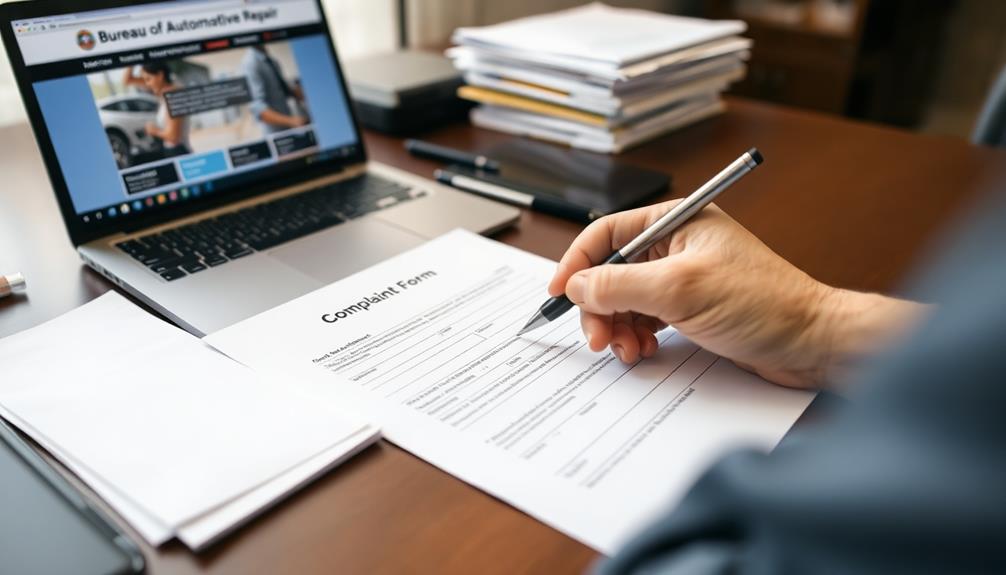
Once you submit your complaint to the California Bureau of Automotive Repair (BAR), you'll receive a confirmation postcard within 10 days, assuring you that your complaint has been acknowledged. This confirmation is essential as it marks the beginning of the process.
During the investigation, the BAR collects relevant documentation, which may include invoices, receipts, and any communication records related to your complaint.
It's important to retain copies of all documents you submit, as well as any correspondence you receive from the BAR. Keeping these records organized will help you stay on top of the situation and provide necessary information if required.
As the investigation unfolds, the BAR may communicate with the mechanic involved, ensuring that both parties are kept informed about the progress.
If the outcome isn't satisfactory, you can request a subpoena for BAR records, which may be useful for potential court proceedings.
Always remember, thorough documentation and clear communication are key to steering the complaint process effectively. By taking these steps, you'll be better prepared as your complaint moves forward.
Investigation Process Explained
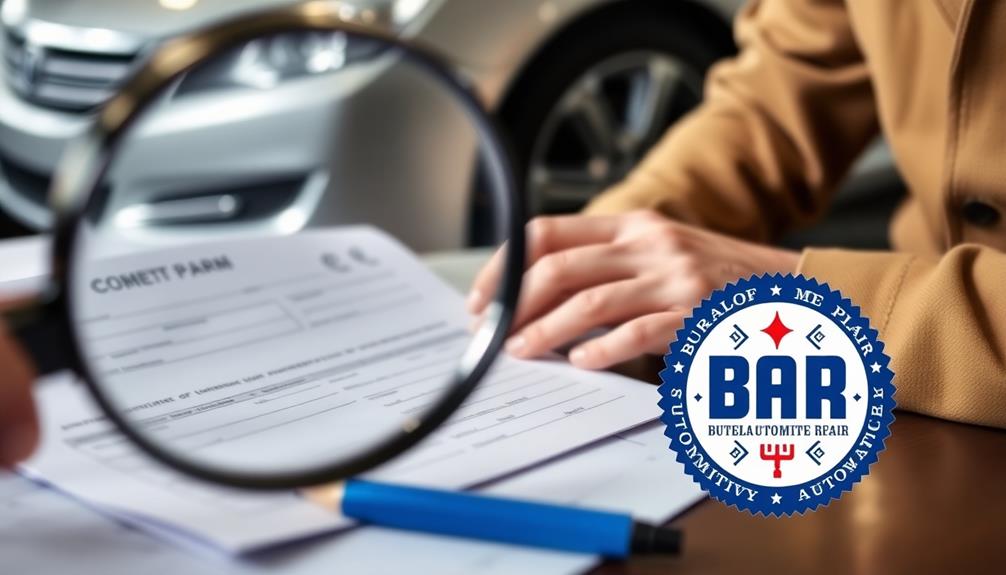
The investigation process initiated by the California Bureau of Automotive Repair (BAR) is designed to thoroughly assess your complaint and any potential violations of the Auto Repair Act.
Once your complaint is filed, a BAR representative will reach out to the mechanic involved to gather information and seek a resolution. This guarantees that both you and the mechanic have the opportunity to present your sides of the story.
During the investigation, the BAR may:
- Review the details you've submitted to identify any violations
- Contact the mechanic for their response and documentation
- Issue subpoenas if necessary to obtain relevant records
The BAR aims to resolve complaints without court involvement, prioritizing an amicable outcome.
After the investigation, you and the mechanic will receive notification regarding the results, which may include recommendations or determinations of violations.
If your complaint remains unresolved, the BAR may suggest additional actions, such as pursuing a civil claim in small claims court.
This process is designed to guarantee fairness and transparency, while helping you navigate any issues with auto repair services effectively.
Possible Outcomes of Complaints
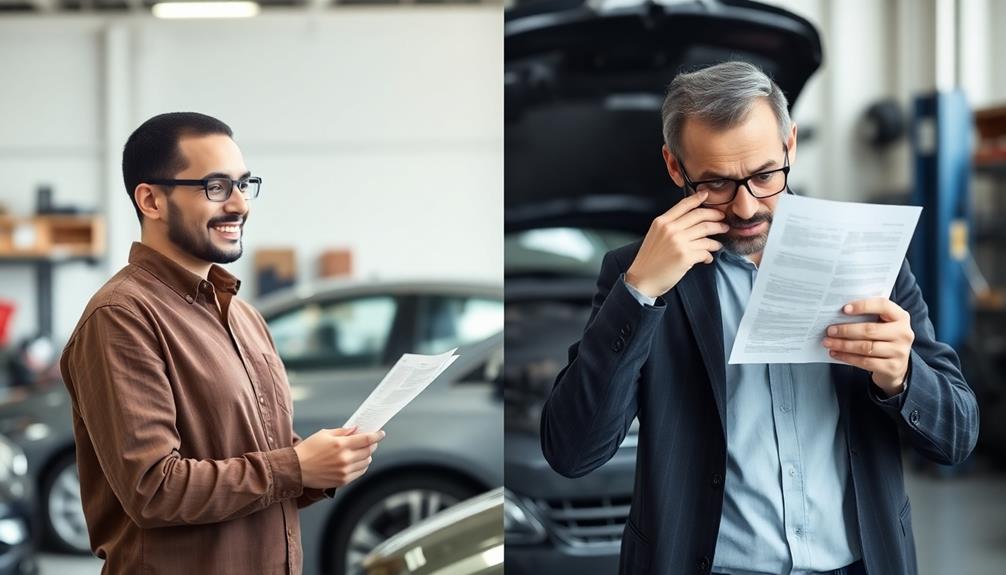
Filing a complaint with the California Bureau of Automotive Repair (BAR) can lead to several potential outcomes depending on the findings of their investigation.
After reviewing your complaint, the BAR will notify both you and the mechanic about the outcome. This could result in no action taken, a settlement, or disciplinary measures against the mechanic if violations of the Auto Repair Act are found.
If your complaint is substantiated, the BAR may require the mechanic to take corrective action. This could involve providing refunds or completing any unfinished repairs that were originally agreed upon.
In some cases, the investigation might even lead to a mutual agreement between you and the mechanic, preventing the need for further escalation.
However, if your case remains unresolved, you have the option to request a subpoena for BAR records. These records can serve as valuable evidence if you decide to take your complaint to small claims court.
Legal Recourse Options
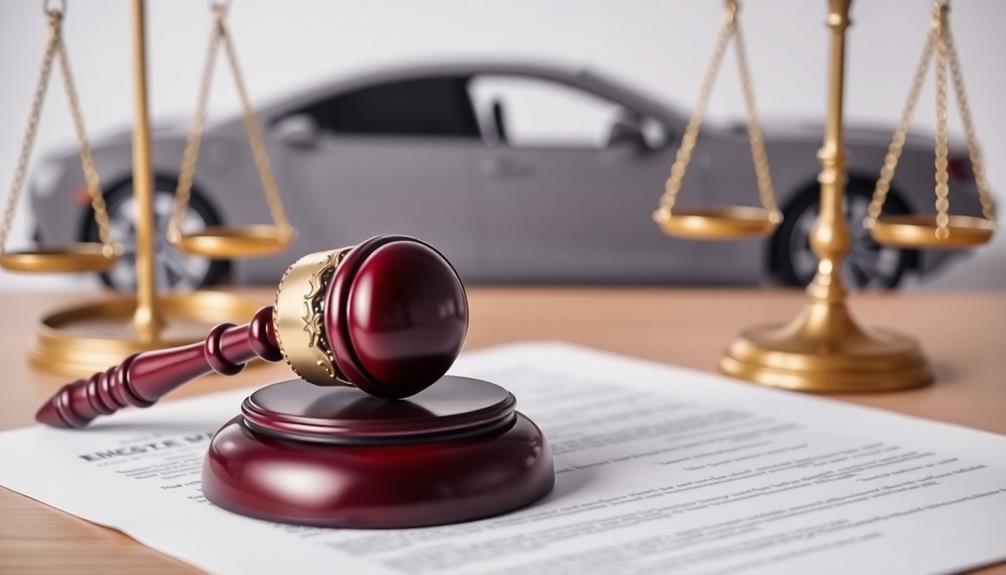
If you find yourself dissatisfied with the outcome of your complaint to the Bureau of Automotive Repair, you have several legal recourse options available to you.
First, gather all your documentation of communication with the repair shop, including invoices and repair records. This evidence will support your case if you decide to pursue legal action.
You may consider filing a legal claim for breach of contract if the repairs weren't performed as agreed. Additionally, if the repairs resulted in further damage, you might pursue negligence claims.
Reviewing any warranties or guarantees offered by the repair shop can also reveal potential legal avenues for recourse.
Here are some steps to help you navigate your options:
- Consult a consumer protection attorney: They can guide you through the legal process and help evaluate your case.
- File a small claims court suit: This allows you to seek compensation without needing a lawyer.
- Report to local consumer protection agencies: They can provide additional support and resources.
Additional Resources for Consumers
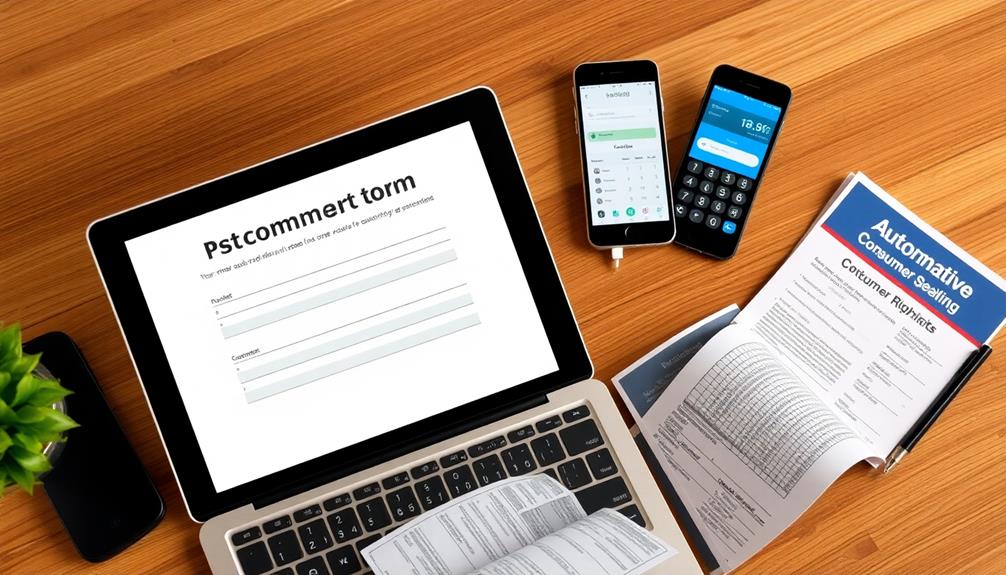
Accessing additional resources can greatly enhance your understanding of consumer rights in automotive services. The California Bureau of Automotive Repair (BAR) offers valuable educational materials that detail your rights when dealing with an auto repair shop.
If you're considering filing a complaint, the BAR website is your first stop. You can file complaints online or download a form to mail in, making the process straightforward and convenient.
Under California law, the BAR investigates complaints to identify potential violations of the Auto Repair Act. They communicate with both parties involved to seek a resolution.
You'll receive a confirmation postcard within 10 days after filing a complaint, so you know your issue is being addressed.
For further assistance, don't hesitate to explore additional resources like the California Department of Consumer Affairs. They provide guidance on your legal rights and the steps to take if you need to escalate your complaint.
You might also consider contacting the Better Business Bureau, which can help mediate disputes and provide insights into the reputation of the auto repair shop in question.
Empower yourself with this knowledge to guarantee your rights are protected.
Frequently Asked Questions
What Does the Bureau of Automotive Repair Do?
The Bureau of Automotive Repair regulates mechanics and repair shops, ensuring they comply with automotive service laws. It issues licenses, investigates consumer complaints, and provides educational resources to help you understand your rights as a consumer. The Bureau also administers the Smog Check Program, which is crucial in maintaining air quality standards. As part of its mission, the definition of Bureau of Automotive Repair encompasses consumer protection initiatives and establishing fair business practices within the automotive repair industry. By working to resolve disputes between consumers and repair shops, it plays a key role in maintaining industry accountability and transparency.
How Do I File a Complaint Against an Auto Repair Shop in Texas?
Wondering how to address issues with an auto repair shop in Texas? You can file a complaint with the TxDMV by completing their online form, providing details and documentation about your experience. It's straightforward!
What Can I Do if My Car Is Taking Too Long to Repair?
If your car's taking too long to repair, communicate with the shop about updates. Review any estimates, document interactions, and consider your options, including complaints or legal action, if delays become unreasonable.
Who Regulates Auto Body Repair Shops in Texas?
In Texas, the Texas Department of Motor Vehicles dances like a conductor, regulating auto body repair shops. They guarantee shops comply with laws, requiring licenses and written estimates to keep your repair experience smooth and fair.
Conclusion
Filing a complaint with the Bureau of Automotive Repair can feel intimidating, but it's your right as a consumer. By understanding the process and knowing what to expect, you can take control of your situation. Have you ever felt frustrated by a mechanic's service? Don't let that feeling linger. Use the steps outlined here to guarantee your voice is heard and your concerns are addressed. Remember, you deserve fair treatment and quality service!
